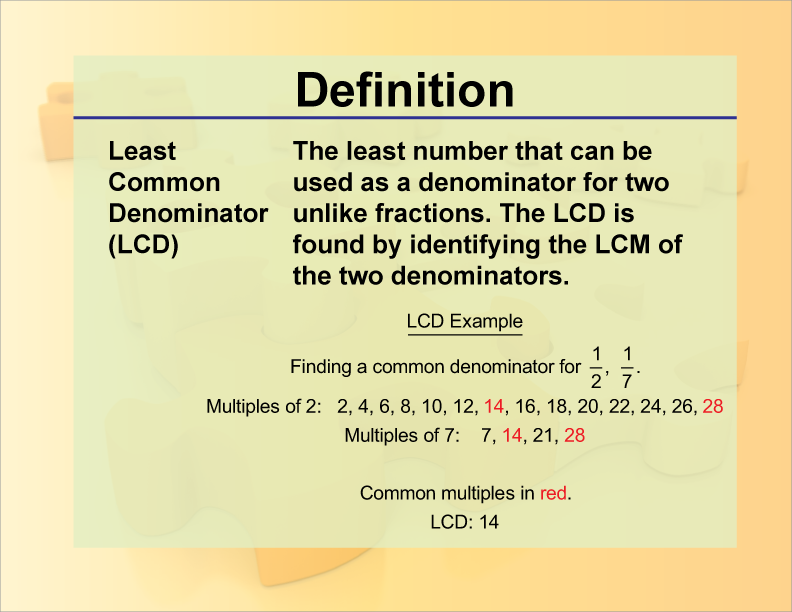
Display Title
Definition--Fraction Concepts--LCD
Display Title
Least Common Denominator (LCD)

Topic
Fractions
Definition
The Least Common Denominator (LCD) is the smallest common multiple of the denominators of two or more fractions.
Description
The concept of the Least Common Denominator (LCD) is crucial in the topic of fractions, particularly when performing operations such as addition, subtraction, and comparison of fractions. The LCD allows fractions with different denominators to be converted into equivalent fractions with a common denominator, facilitating straightforward arithmetic operations.
For instance, when adding fractions like 1/4 and 1/6, finding the LCD of 4 and 6, which is 12, allows both fractions to be expressed with the same denominator: 1/4 becomes 3/12, and 1/6 becomes 2/12. This common denominator simplifies the addition process to
3/12 + 2/12 = 5/12.
Understanding and finding the LCD is fundamental in ensuring accuracy in fraction calculations. It also aids in simplifying complex fraction problems, making it easier for students to grasp more advanced mathematical concepts. Mastery of the LCD is a stepping stone to higher-level math topics, such as algebra, where manipulating fractions becomes more intricate.
For a complete collection of terms related to fractions click on this link: Fractions Collection.
| Common Core Standards | CCSS.MATH.CONTENT.6.NS.B.4 |
|---|---|
| Grade Range | 3 - 6 |
| Curriculum Nodes |
Arithmetic • Fractions • Fractions and Mixed Numbers |
| Copyright Year | 2013 |
| Keywords | fraction, least common denominator, LCD |